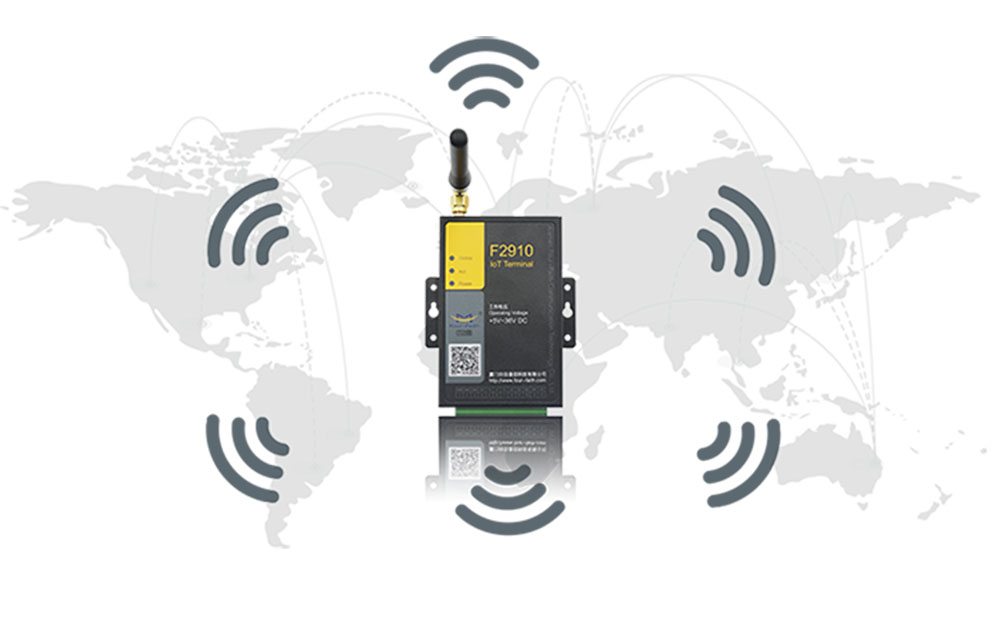Whether integrating a new IoT module or terminal into a IoT-enabled device, testing low-power performance, or solving signaling problems encountered in a design, Four-Faith provides superior solutions to overcome the many challenges faced by these IoT designs Challenges that help you accelerate development and reduce time to market.
1. Testing challenges for IoT-enabled devices
Given the complexity of IoT-enabled devices, design developers must address many issues before developing a usable product, and each aspect of the device presents specific challenges. Throughout the development process, engineers need to use multiple test solutions to make the necessary measurements to guarantee the proper functioning of IoT-enabled devices.
2. Real-time power consumption test
Because most IoT applications are difficult to update due to geographical location or cost, long-term operation is the key to the promotion of IoT modules, and in some cases it takes more than 10 years, so power consumption is the most important factor for IoT terminals. Or the most basic and most important indicator of the module.
3. Wireless connectivity test
The Internet of Things is widely used in the integration of public networks through intelligent perception, identification technology, and communication technology. At present, common IoT technologies include Wifi, Zigbee, Bluetooth, RFID, LoRa, and NB-IoT. Since many IoT technologies use public frequency bands, such as 2.4GHz, the problem of interference between different devices has greatly affected the The device works normally. Especially as IoT-enabled devices become more and more popular, more and more IoT-enabled device manufacturers are concerned about the quality and power of signals sent and received by IoT-enabled devices and the degree of influence on other devices.
The IoT wireless connectivity test solutions launched by many companies are aimed at product design, R&D and testers, which can easily help customers test the frequency accuracy, transmit power, receive sensitivity, signal quality, occupied bandwidth, channel power, adjacent channel of IoT-enabled devices Leakage ratios, constellation diagrams, EVM errors, interference effects on other IoT-enabled devices, etc. All the above indicators can be tested and analyzed by the signal and spectrum analyzer FPL1007, the vector signal analysis software VSE, the power measurement probe NRP8S, the frequency counter HM8135-X, and the vector signal generator SMBV100A.
The signal and spectrum analyzer FPL1003 or FPL1007 can analyze and test signals and IoT transmitting devices in the time, frequency and modulation domains. The time domain can observe the signal period, amplitude and other characteristics, especially for pulsed signals; the frequency domain can observe the spectrum, power, harmonics and other characteristics of the signal; the modulation domain can analyze the modulation quality of the signal and test parameters such as EVM.
As users' demands for design miniaturization and multi-function increase, designers need to create higher density, faster speed, lower power consumption and compact circuit designs. The distance between traces is getting smaller and the power supply is decreasing, so power integrity problems are becoming more common.
Power Integrity is used to analyze how efficiently power is converted and delivered within a system from source to load. By driving low-power electronics, the power and tolerance emissions of DC power supplies are reduced, some by ±5% to ±1%. Ripple, noise and transients on the output supply can adversely affect the accuracy of the clock and digital data. Therefore, designers need to utilize power integrity solutions to measure these low DC voltages with high accuracy.
Moving signals in electronic equipment requires the use of wires or packaging structures, and signal integrity is used to measure the electrical properties of these structures. Common signal integrity issues in today's high-speed digital designs include reflections, losses, crosstalk, distortion, and power supply noise, which can degrade overall system performance. Both time-domain and frequency-domain vector network measurement techniques are required to help designers diagnose and correct signal integrity problems with confidence.
Meeting electromagnetic interference (EMI) compliance regulations is key to getting an IoT module or end product to market faster, and failure at the final design stage means costly redesigns and delays in time-to-market. Execute EMI pre-compatibility test before the formal compatibility test to avoid the waste of retest cost caused by failure of compatibility test, so as to observe the interference signal in a more timely manner, solve the problem of electromagnetic interference and EMI, optimize the design, and improve the EMI compatibility test Passing rate.
The Internet of Things (IoT) is an important part of the new generation of information technology, and it is also an important stage of the development and progress of the information age. The concept of the Internet of Things has exploded in recent years and has become one of the hottest technology hotspots. The technical vision of the Internet of Things is to connect a huge number of smart terminals. IoT technology, especially IoT applications, is affecting all aspects of our lives, including home automation equipment, entertainment systems, security and alarm systems, smart watches and wearable health. Monitoring equipment, intelligent transportation equipment, waste disposal equipment, connected cars, smart homes, and shared bicycles, etc., the Internet of Things involves almost every industrial, consumer, medical and life application.
These IoT-enabled devices present unique challenges for designers, engineers, manufacturers, operators, and more. For example, when designing devices such as smart watches and fitness monitors, they must meet the requirements of small size, cost-effectiveness and low power consumption. When power and signal paths are too close together, signal interference and crosstalk problems can occur due to capacitive and inductive coupling, so designers need to use dense, highly integrated circuits and SoC (system-on-chip) devices. New hardware must support multiple wireless platforms while maintaining low power consumption, as well as multiple wireless protocols to ensure interoperability and interconnectivity between different device technologies or systems.




















